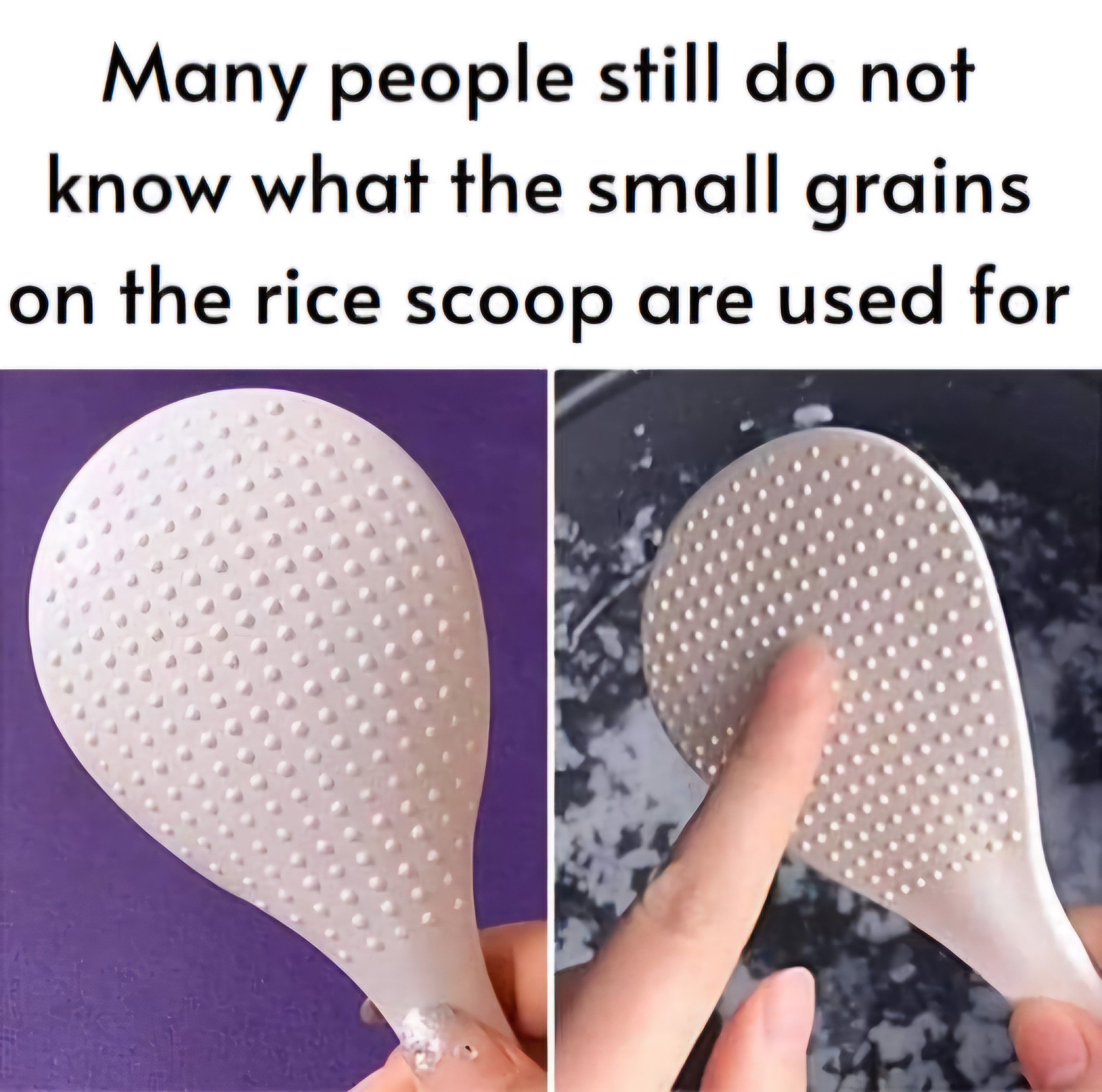If you’ve recently purchased a rice cooker, you might have noticed a unique tool included in the box—a rice paddle. This small yet essential utensil, resembling a flat spatula with a rounded head, might not grab your attention initially, but it plays a vital role in preparing the perfect bowl of rice. Known as a “shamoji” in Japan, this tool has been a kitchen staple for centuries, valued for its versatility and effectiveness. Let’s dive into why you should always keep this paddle handy and how it can enhance your rice-cooking experience.

One of the primary benefits of the rice paddle is its ability to protect your rice cooker’s nonstick surface. The inner pot of a rice cooker is coated with a nonstick material designed to make cooking and cleaning a breeze. However, this coating is delicate and can easily be damaged by metal utensils, which could cause it to peel or lose its functionality over time. The rice paddle, usually made from plastic or wood, is gentle on nonstick surfaces, helping to preserve the quality of your rice cooker and extending its lifespan. Additionally, the paddle’s flat design is perfect for scooping, stirring, and serving rice without breaking or crushing the grains. Stirring freshly cooked rice with the paddle also helps release excess moisture, resulting in a fluffy, evenly textured batch every time. If you’re preparing sushi, the paddle is indispensable for mixing vinegar into the rice gently and evenly without damaging the grains.
For anyone who struggles with cooking rice on the stovetop or makes it frequently, a rice cooker is a game-changer. This appliance takes the guesswork out of rice preparation, automating the process so you can focus on other tasks. Simply add rice and water, and the cooker heats the mixture to a boil, then adjusts the temperature automatically to ensure the rice cooks perfectly. Most models come with detailed guides for water-to-rice ratios, making it easier to achieve consistent results. Chef Dale Talde, owner of Goosefeather, emphasizes the reliability of rice cookers, saying, “It’s a must-have appliance because even if you happen to put in too much water or not enough, it adjusts to help make perfect rice.”
Rice cookers are not just limited to making rice—they’re incredibly versatile. Many models can handle a variety of dishes, including curries, stews, oatmeal, and even cakes. Advanced features like quick-cook settings and delayed start timers add further convenience, making meal preparation faster and more flexible for busy households.
To ensure your rice turns out perfectly, there are some key tips to follow. First, always rinse your rice before cooking. Rinsing removes excess starch, which can make the rice gummy, and reduces arsenic levels while clearing away dust or bran residue. Min Kim Bryant, a market analyst, highlights the importance of rinsing rice, comparing it to washing produce to ensure cleanliness and safety. For certain rice varieties, like sushi rice or brown rice, soaking the grains for about 30 minutes before cooking can improve their texture. This is especially helpful for thicker grains, such as wild rice, as it allows them to absorb water evenly and cook more thoroughly.
For those without a rice cooker, learning to cook rice on the stovetop is an invaluable skill. Chef JJ Johnson, owner of the rice-focused eatery Fieldtrip, recommends using a large pot to allow the rice to expand evenly during cooking. The correct water-to-rice ratio is key for success:
- Long-grain white rice: 1½ cups water to 1 cup rice
- Sushi rice: 1¼ cups water to 1 cup rice
- Short-grain brown rice: 2¼ cups water to 1 cup rice
Bring the rice and water to a boil, then reduce the heat and cover the pot. Simmer until the water is absorbed, which takes about 20 minutes for white rice and 45 minutes for brown rice. After cooking, let the rice rest for 10 minutes before fluffing it with a rice paddle to achieve the ideal texture.
If you’re looking to elevate your rice dishes, there are plenty of creative ways to add flavor and variety. Cook rice in broth or coconut milk for a richer taste, or add spices like turmeric or saffron for a vibrant twist. Avoid stirring the rice while it cooks to keep the grains intact. For a nutty aroma and slightly crispy texture, toast freshly cooked rice by sautéing it in a pan with a bit of oil. Batch-cooking rice and freezing it in individual portions makes meal prep quick and convenient; just reheat it with a splash of water or oil to restore its texture. Leftover rice can also be used in fried rice, rice pudding, or as a hearty base for soups.
While the rice paddle may seem like a minor accessory, it plays a crucial role in preserving your rice cooker’s quality and ensuring your dishes turn out flawlessly. Paired with a reliable rice cooker, it transforms rice-making from a potentially tedious task into a seamless, enjoyable experience. Whether you’re crafting a batch of fluffy jasmine rice or preparing sushi for a special occasion, this simple tool ensures culinary success. Its versatility makes it a must-have for any kitchen, proving that even the humblest utensils can make a big impact.





